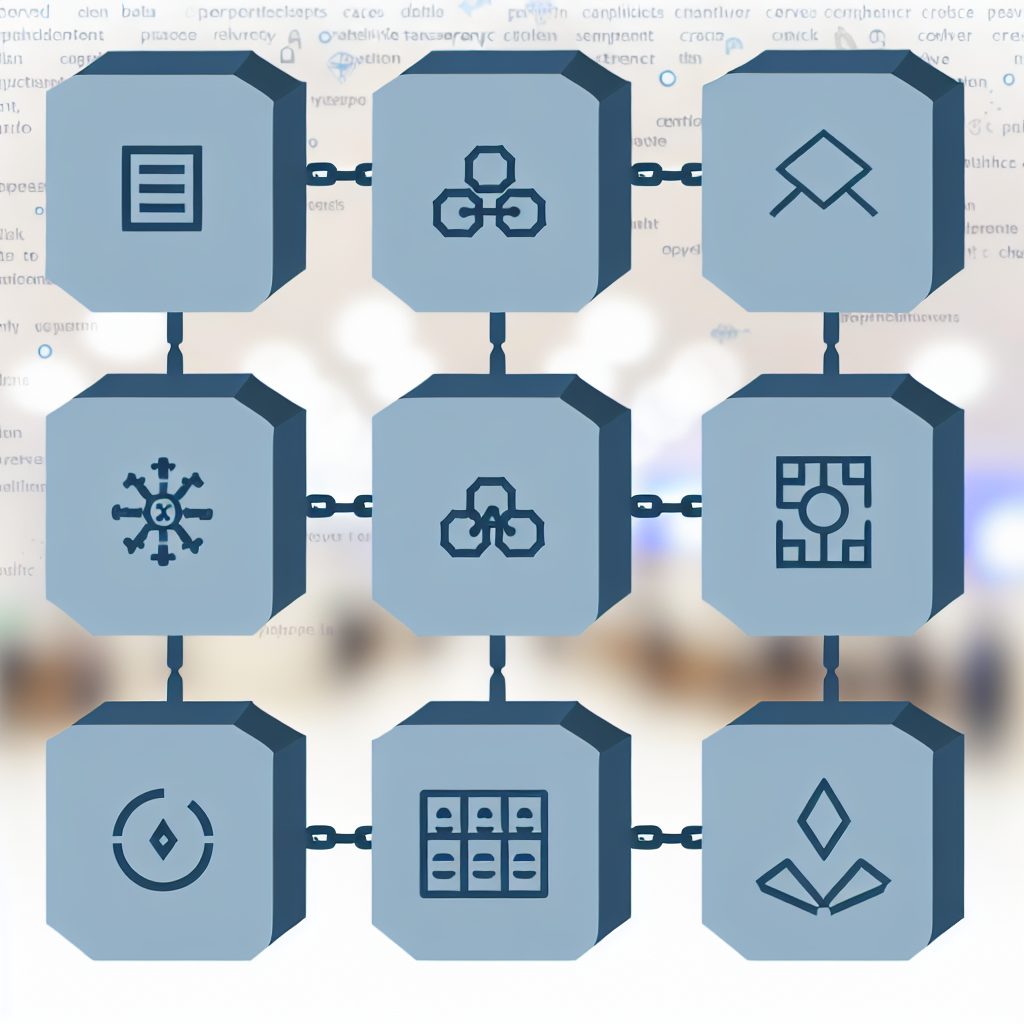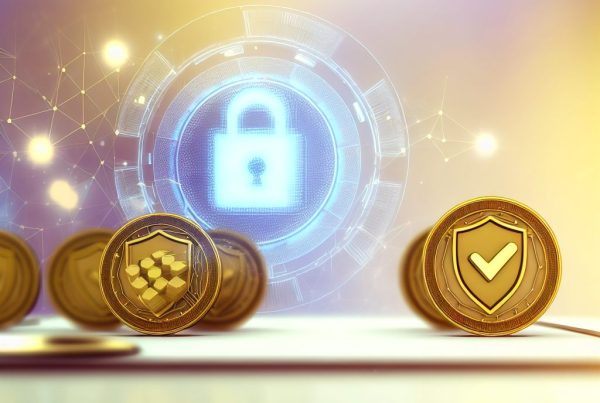How Blockchain Works in Simple Terms
Blockchain technology has revolutionized the way we think about data, transactions, and trust in the digital age. Particularly in the cryptocurrency industry, understanding how blockchain works is crucial for anyone looking to navigate this exciting landscape. This article will break down the complexities of blockchain into simple, digestible terms, making it accessible for both beginners and seasoned enthusiasts.
What is Blockchain?
At its core, a blockchain is a decentralized digital ledger that records transactions across many computers. This ensures that the recorded transactions cannot be altered retroactively without the consensus of the network. Each block in the chain contains a number of transactions, and every time a new transaction occurs, it is added to a block. Once a block is filled with transactions, it is added to the chain in a linear, chronological order.
Key Components of Blockchain
To understand how blockchain works, it’s essential to grasp its key components:
- Blocks: Each block contains a list of transactions, a timestamp, and a reference to the previous block.
- Nodes: These are the computers that participate in the blockchain network. Each node has a copy of the entire blockchain.
- Consensus Mechanisms: These are protocols that consider a transaction as valid. The most common mechanisms are Proof of Work (PoW) and Proof of Stake (PoS).
- Cryptography: Blockchain uses cryptographic techniques to secure data and ensure that transactions are safe and verifiable.
How Does Blockchain Work?
Now that we have a basic understanding of what blockchain is, let’s delve into how it works step by step:
1. Transaction Initiation
When a user initiates a transaction, it is broadcasted to the network. For example, if Alice wants to send 1 Bitcoin to Bob, she creates a transaction that includes her digital signature and Bob’s public address.
2. Transaction Verification
Once the transaction is initiated, it is sent to a network of nodes for verification. Each node checks the transaction against its copy of the blockchain to ensure that Alice has enough balance to make the transaction and that she hasn’t already spent the same Bitcoin elsewhere.

3. Creating a New Block
After verification, the transaction is grouped with other verified transactions into a new block. This block is then time-stamped and linked to the previous block, forming a chain.
4. Consensus Mechanism
Before the new block can be added to the blockchain, the network must reach a consensus. In a Proof of Work system, miners compete to solve complex mathematical problems. The first miner to solve the problem gets to add the new block to the chain and is rewarded with cryptocurrency. In a Proof of Stake system, validators are chosen based on the number of coins they hold and are willing to “stake” as collateral.
5. Block Addition
Once consensus is reached, the new block is added to the blockchain, and the transaction is considered complete. The updated blockchain is then distributed across all nodes in the network, ensuring that everyone has the same version of the ledger.
Benefits of Blockchain Technology
Blockchain technology offers several advantages, particularly in the cryptocurrency industry:
- Decentralization: No single entity controls the blockchain, reducing the risk of fraud and manipulation.
- Transparency: All transactions are visible to anyone with access to the blockchain, promoting accountability.
- Security: Cryptographic techniques make it extremely difficult to alter any information once it has been added to the blockchain.
- Efficiency: Transactions can be processed faster than traditional banking systems, especially for cross-border payments.
Real-World Applications of Blockchain in Cryptocurrency
Blockchain technology is not just theoretical; it has practical applications that are transforming various industries. Here are some notable examples:
1. Bitcoin
Bitcoin, the first and most well-known cryptocurrency, operates on a blockchain. It allows users to send and receive payments without the need for intermediaries like banks. This peer-to-peer system has made Bitcoin a popular choice for those seeking financial independence.
2. Ethereum
Ethereum introduced the concept of smart contracts, which are self-executing contracts with the terms of the agreement directly written into code. This allows for decentralized applications (dApps) to be built on its blockchain, expanding the use cases beyond simple transactions.
3. Supply Chain Management
Companies like IBM and Walmart are using blockchain to enhance transparency and traceability in supply chains. By recording every step of the supply chain on a blockchain, businesses can ensure product authenticity and reduce fraud.
4. Decentralized Finance (DeFi)
DeFi platforms leverage blockchain technology to offer financial services without traditional banks. Users can lend, borrow, and earn interest on their cryptocurrency holdings through smart contracts, creating a more inclusive financial ecosystem.
Challenges Facing Blockchain Technology
Despite its many advantages, blockchain technology also faces several challenges:
- Scalability: As more users join the network, transaction speeds can slow down, leading to higher fees and longer wait times.
- Energy Consumption: Proof of Work systems, like Bitcoin, require significant energy to maintain, raising environmental concerns.
- Regulatory Issues: Governments around the world are still figuring out how to regulate cryptocurrencies and blockchain technology, which can create uncertainty for users and investors.
FAQs About Blockchain Technology
What is the difference between blockchain and cryptocurrency?
Blockchain is the underlying technology that enables cryptocurrencies to function. While cryptocurrencies like Bitcoin and Ethereum are digital currencies that use blockchain for transactions, blockchain itself can be used for various applications beyond just currency.
Is blockchain technology secure?
Yes, blockchain technology is considered secure due to its decentralized nature and the use of cryptographic techniques. However, vulnerabilities can exist in the applications built on top of the blockchain, so users should exercise caution.
Can blockchain be hacked?
While the blockchain itself is highly secure, individual wallets and exchanges can be vulnerable to hacking. It’s essential to use secure wallets and follow best practices for safeguarding your cryptocurrency.
What are smart contracts?
Smart contracts are self-executing contracts with the terms of the agreement directly written into code. They automatically execute actions when predefined conditions are met, eliminating the need for intermediaries.
How can I invest in blockchain technology?
You can invest in blockchain technology by purchasing cryptocurrencies, investing in blockchain-related companies, or participating in blockchain projects through Initial Coin Offerings (ICOs) or token sales.
Conclusion
Understanding how blockchain works is essential for anyone interested in the cryptocurrency industry. This technology not only underpins digital currencies but also has the potential to transform various sectors by enhancing transparency, security, and efficiency. As blockchain continues to evolve, staying informed about its developments will be crucial for navigating this dynamic landscape.
For the latest news and updates on cryptocurrency and blockchain technology, consider visiting Bitrabo. You can also follow me on social media for more insights: X, Instagram, and Threads.
Disclaimer: This article is for informational purposes only and should not be considered financial advice. Always do your own research before investing in cryptocurrencies.
The Crypto Watchlist of the Week 🔎
Subscribe to receive expert-curated projects with real potential—plus trends, risks, and insights that matter. Get handpicked crypto projects, deep analysis & market updates delivered to you.


